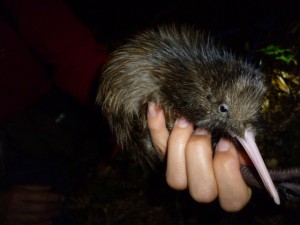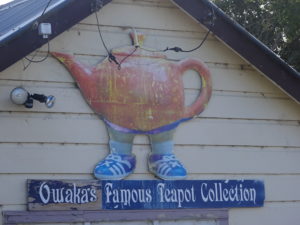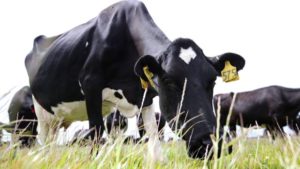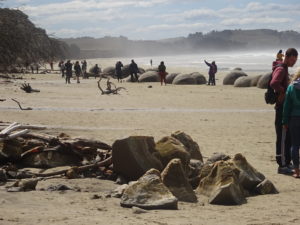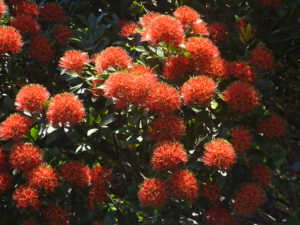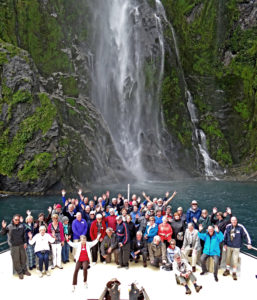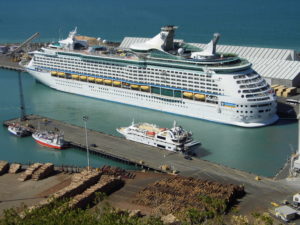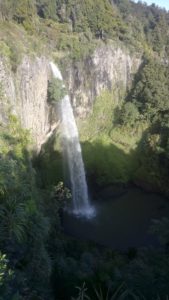Blog Categories
Blogroll
- Tony Jones on why your budget shouldn't matter…
- How UK Museums Use Mobile Tech to Enhance Visitor Experience
- David Brooks comments on the Experience Economy
- Excerpts from a paper by John A. Veverka
- Claire Ross outlines the digital age of visitor experiences
- What is the single most important aspect of the customer experience – Chris Bell
Posts Tagged ‘100%’
Nau mai!
Late, last summer in Coastal Otago; hoiho and visitors mixing in a small area of reserve land in a natural landscape. No interpreters present, and “common sense” guidelines being ignored by some.
With increasing number of visitors travelling to more remote places the potential threat to endangered wildlife is incrementally increasing. What drive visitors to seek wildlife interactions?
Considering the importance of this question there is a lack of recent research that suggests motivations and potential mitigation of any issue. One key study undertaken(in New Zealand and Australia) by CRC Tourism sets some important benchmarks in understanding, and thereby managing, visitors expectations.
Surveys asked visitors to rate how important opportunities to see wildlife are in their holiday travel decisions. Overall:
- 20% said that the opportunity to view wildlife is one of the most important factors in their travel decisions(most important decision factor);
- 51% said that opportunity to view wildlife is included as part of their travel decisions (one decision factor);
- 28% said that viewing wildlife is not included as part of their travel decisions, but they enjoy seeing wildlife while on holidays (not a decision factor)
Those interviewed were asked how could the wildlife experience be improved. Key responses included:
- see more wildlife – number, variety and different aspects of
- have more time/improve the timing and logistics of tours
- have more interaction with wildlife
- improve visitor management, in particular, to have fewer visitors/smaller groups
- enhanced interpretation, both guide knowledge and non personal
Across a range of sites in both countries people seeking wildlife interactions were likely to be/have: older, have higher levels of education, stay longer, travel further, spend more, higher education levels and incomes, independent travellers, younger, female, younger, independent, use the internet for information, stay longer in the region.
Key themes around visitor satisfaction with wildlife experiences was higher for visitors who: learnt more about wildlife, rated their most memorable wildlife encounter as exciting, rated their most memorable wildlife encounter as natural ,place greater importance on seeing wildlife on holiday, are tour participants, are female, seek wildlife encounters in natural, environment, desire wildlife encounters with knowledgeable guides or staff present, and saw an animal for the first time in real life.
There is guidance in this research. Clues and actions we could take to better manage the interactions noted in the first paragraph.
In previous blogs we have touched on the importance of interpretation as the key facilitator of empowering better wildlife interactions, the need for companies to improve their social license to operate, and threats to our rare and endangered wildlife.
Wildlife interactions are a key plank of tourism in New Zealand /Aotearoa. We need enhanced research on wildlife interactions and agreed approaches to enhancing the visitor experience, and protecting the uncertain future of many of our natural taonga, across the country.
We need big picture, long term, balanced, decision making.
Ka kite ano
Malcolm
Naumai
A recent night sky experience has led us to reflect on the collective difference in NZ inc. By this we mean what are the unique selling points and subsequent tourism products of the region or place?
A quick search of night sky tours found at least seven “planetarium” , over fifteen “tours”, and at least 24 local astronomical societies that operate observatories on a few nights each month. We are certainly not decrying our night sky experiences. New Zealand is one of the best places in the world to see the night sky. The fact that the world’s largest Dark Sky Reserve and the world’s only Dark Sky Sanctuary on an island can be found here support this.
Another search could just as easily find different versions of essentially the same product, from zip-lines to jet boat tours, repeated throughout Aotearoa.
We first commented on the wider issue in 2011 and again in 2012.
We are a small country with a wide range of differentiation (landscape, culture, food, wine etc) between regions. Our collective differences are potentially our strength.
One can only hope that the Provincial Growth Fund recognises this when making it’s deliberations.
There are hints that perhaps the rise in international visitor numbers is starting to slow. We must continue to grow, differentiate and create points of difference in our tourism product.
These should be regionally based, unique and reflect the culture and stories of that place. Not simply repeats of a similar experience found elsewhere in the country.
How many night sky experiences do we need?
Ka kite ano
Naumai
If you’re are linked into tourism, in any form, you will be aware that there are a number of key issues facing the industry ahead of increasing visitor numbers. There have been many calls for increased funding for the sector, both at national and regional levels, to address infrastructure and conservation related issues arising from tourism.
Good summaries of the issue can be found here and here.
Currently international tourism remains New Zealand’s largest export earner and it was responsible for a fifth of earnings from all exports of goods and services. Tourism accounted for 5.6 per cent of gross domestic product (GDP) and directly employs 230,793 people or 8.4 percent of the workforce. Currently the Government receives $1.5b in GST from international visitors, with a further $1.8b collected from domestic visitors.
The tourism leaders report (2016) suggests a National Tourism Infrastructure Levy be created comprising of a 2% national bed levy across the accommodation sector and a $5 increase to the border levy which would raise $65 million per annum from the industry.
Treasury’s view on any new tax is not supportive suggesting “that (there is no evidence) a border or bed tax meets the burden of proof for departing from BBLR (broad-base low-rate) principles”.
The latest in a myriad of comments on the tax issue come from Minister of Tourism, Kelvin Davis, who while at TRENZ, was forthright in saying the future is in a “levy on international visitors”.
Of course whichever side of the debate you support, the issue becomes more complex with TLA’s pushing and in some cases implementing “bed” tax. Currently Auckland, Wellington, Queenstown , Dunedin and Hawkes Bay are all pushing for, discussing, or in Auckland’s case legislating for, such a tax.
At the time of writing Rakiura/Stewart Island is the only destination to use a similar mechanism (visitor levy fee) although other entities such as Milford Sound Development Authority include a levy in all passenger cruise fees.
The key ingredient missing in the discussion is the major risk of an uncoordinated approach to fixing both infrastructure and conservation based issues. We have previously discussed the risks to tourism of uncoordinated approaches to sustainability and a social license to operate.
One thing a visitor (international or domestic) does not need is an arrival levy/tax and then varying provincial “bed” taxes – none of which are either consistent, efficient to administer or designed to solve the myriad of different issues specific to different places that make up New Zealand/Aotearoa.
Ka kite ano
Naumai
It is always a privilege to “share” Aotearoa / New Zealand. It matters little if the audience is domestic or international , hitting the road to explore our place in the world is one of life’s pleasures.
This summer was however different. Tasked with sharing the southern part of the South Island with a group of international visitors (including over the Chinese New Year period) I reflected on what one might find.
Reading and listening to media headlines I was expecting a constant stream of polluting freedom campers, over priced food and lodging, little space, tired operators, and people literally everywhere – even in my normally quiet haunts and secluded places!
The trip took in every destination and more, between Christchurch and Bluff via the Catlins, Manapouri, Te Anau Queenstown and Wanaka.
So summing up the trip was a great success, we achieved most things we promised our visitors and more. We saw rare and endangered wildlife, meet some fantastic locals, enjoyed great food and wine and the whole gambit of southern landscapes.
That of course is the official version.
My overwhelming impression after ten days on the road in the southern South Island, is of too many people in too many locations. I mean literally no one used to go to Slope Point (the most southern point of mainland NZ) , a full car park at Bluff mid afternoon (great views) and absolutely no where to turn in Wanaka around 4pm.
I am apprehensive when I hear local operators saying that bookings for next year re even higher than this summer, in one case up to a third. What does that mean for tourism’s social license to operate?
Here are some facts:
The number of international visitors coming into NZ averages over 320,000 a month
This is an average yearly growth of over 5.65 for the last ten years
More than one in ten jobs is indirectly generated by tourism
International visitors contribute $ 40 million per day to the economy
And New Zealander’s (2017) views on tourism
96% of us agree tourism is good for NZ 35% think tourism puts too much pressure on NZ 21% think there are too many visitors
Challenges for NZ’s around international visitors include: road congestion, litter and a high risk of motor accidents
In earlier blogs we have discussed the opportunities and challenges for tourism in maintaining and enhancing a social license to operate. Some initiatives such as Tourism Aotearoa’s sustainable tourism are small step in the right direction. But if this years southern experience on the road is next years reality, then we have a serious problem – with no coordinated response in sight.
Ka kite ano
Naumai
It’s late December and the rata is flowering beautifully on the West Coast, that’s a South Islander’s version of the pohutakawa ‘Christmas tree”!
In Akaroa our lavender fields are bright purple – Akaroa Organics and ready for harvest.
In our last post for the year we’d like to share a recent experience with one of New Zealand’s leading and award winning activity operators. Checking in we were met by two foreign nationals, they were polite but curse. Unfortunately as soon as we were checked in the two staff spent most of the non contact time (about 30 minutes prior to the activity beginning) trying to redesign the retail space in front of the counter so “they could hide from people”. Really? As front line hosts,and the first personal touch-point between visitors and the company, it should be the opposite. What made it so bad was that they were so nonchalant about this, and everyone in the room who spoke good English could understand what they were saying.
Is this really the type of customer experience our award winning companies are delivering?
The actual activity was interesting but really not what it was hyped up to be. Interaction was limited and much of our time was spent looking at machinery. Trying to interpret a static object requires certain skills, especially when those components dominate the overall experience.
The power of marketing!
Have a great Christmas/Kirihimete and a very happy 2018!
Ka kite ano
Naumai
It was heartening, if with a strong sense of deja vu, to see the tourism industry (re) start a process to ensure economic, environmental, host community, and visitor satisfaction and engagement, drive the future of sustainable tourism in New Zealand.
We have of course been here before with initiatives such as Green Globe and Environmental Plans. These initiatives, while driven locally, had a global context and more importantly measured success towards publicly stated goals. Poor decision making and lack of integration resulted in a lost opportunity for the industry and the weakly positioned environmental initiative in the form of the original Qualmark.
You can read more about this current sustainable tourism initiative here: http://sustainabletourism.nz/assets/Uploads/FINAL-TIA-SUSTAINABILITY-BOOK-17.0-web-spreads.pdf
 In a sense there’s nothing really new here. The approach is the industry’s response to rapid growth, increasing public concerns about international visitor numbers, effects of tourism on local communities and the environment and ensuring tourism businesses are economically successful. All sensible and admirable goals – if not a little overdue.
In a sense there’s nothing really new here. The approach is the industry’s response to rapid growth, increasing public concerns about international visitor numbers, effects of tourism on local communities and the environment and ensuring tourism businesses are economically successful. All sensible and admirable goals – if not a little overdue.
Over the years such initiatives have been met with initial support, particularly amongst the larger tourism entities – check out the current list of supporters here. Many other entities will undoubtedly sign up, driven by a mixture of opportunity, marketing push/pull, desire to stay ahead of the pack and some through genuine commitment.
As Fonterra has found their nearly tw0 year old public relations campaign has meet with mixed reaction. Some see through it as typical pr speak , while others believe it has a role to play in ensuring the dairy industries future in an increasingly skeptical New Zealand.
While not suggesting the campaign is no more than tourism’s version of pr speak it will take more than this initiative to make a difference. More needs to be done with both Central Government and Local Government to ensure all parties commitments are in alignment.
Of course it is local communities that drive a lot of input into both forms of Government. We have previously commented on tourism social license to operate in previous blogs.
The 14 commitments are big on the right words but light on measuring and reporting on success, other than financial.
Hopefully this tourism initiative will be both sustainable, wide reaching and effective!
Ka kite ano
Naumai
It’s that time of the year again.Hopefully you have your team in place, well trained and ready to go!
Recently we took part in a discussion with Tai Poutini Polytechnic, employers and others associated with tourism on the West Coast. We discussed the opportunities and issues that involve training those involved in tourism.
Much of the discussion was based on the qualities of a guide. How do you take someone that may have all the necessary technical skill (i.e. hard) but needs coaching on the (so called “softer”) skills of guiding i.e. people management ? I think there was general agreement in the group that the biggest need was in the latter. For example how do you mentor an eighteen year old to lead, inspire, entertain and enlighten a 60 year old visitor from another country?
In this blog we look at some some of the qualities we should be training just about anyone involved in tourism, but particularly guides.
Charm / ātahu
Every person in your group is looking for information and more importantly, entertainment, from their guide. Remember we are now an entertainment centric society. A guide should always be constantly looking for opportunities to charm and involve your group in doing things, rather than just listening.
An active C drive / mātau
You may of course be a very charming person but if you don’t have the mātau then your’e on the back foot from the start. Yes you need to know facts, figures and anything else somebody on a tour might ask you. You also need to be prepared to find an answer and get back to people. Make sure you engage with everyone in the group and facilitate discussion between the group.
Stories / tito
Visitors (some) love hearing facts behind the topic of interest e.g. Tane Mahuta, but above all visitors love their guide to share a personal story about the topic. Stories engage people’s minds and more importantly hearts. Facts alone do not.
Organisation and flexibility / nahanaha
You need to be super organised and flexible if you want to be a great guide. The group will have certain expectations about what the are expecting to see. You need to deliver on those, and make sure your timing for pre-booked events is perfect. At the same time you need to be flexible. If an attraction is suddenly closed you need to find an alternative!
Humour / whakataka
Your visitors are on holiday; they want to be entertained. That includes the use of humour. It’s a skill to be developed but can ease a difficult situation, reassure visitors, make them laugh and add real value to a situation. While jokes are part of this, the most important part is you as the leader facilitating the humour in an appropriate way.
Empathy / aroha
You can be assured that somewhere, sometime, when you have a group something will happen to someone in the group. It may be lost luggage, bad news from back home, a cultural issue,or any myriad of issues. In this situation aroha will get you a long way, make your guests feel valued and can assist in solving the issue.
You can read some other interesting views of the qualities that make a great guide, and a tourism host, here and here!
Ka kite ano
Malcolm
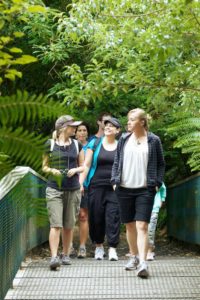 Guiding at Maungatautari
Guiding at Maungatautari
NZx – September 30th : how to boost your social license to operate
Naumai
Last month we looked at some views on why NZ tourism needs to develop it’s social license to operate.
As previously noted, there are many definitions of how to obtain and maintain a social license to operate. At the micro level it’s about the concept of a project achieving ongoing approval of the local community and other stakeholders. That may be formal through processes such as the RMA or the DOC concession process or informal such as access agreements.
At the macro level it is how industry sectors work at a national level along similar lines, and particularly how they influence government.
The opportunity to achieve a social license to operate can be seen as an overall outcome. There is no rule book which defines the process, a method, tools or ways to achieve such an outcome.That is both an advantage and disadvantage.
Gavin Shepherd in the Te Awamutu Courier argues, that for the farming sector, “long-term profits on farm are more linked to these social perceptions than efficiency in production or scale at all costs”.
Dan Ormond, formerly partner at Ideas Shop, notes that, along with knowledge of who your market is and its size, “all aspects of engaging with stakeholders and developing sustainable business practices need to be communicated well in order to keep your business’s social license to operate”.
So how do we achieve such a license?
There seems to be general agreement on the following processes:
- identify key stakeholders (people affected by the project/sector) and continue to review these
- gain social acceptance based around legal, social,and cultural norms – both formal and informal
- gain credibility based on accurate and transparent information and importantly delivering on promises and representations that have been given
- gain trust from the local or national community based on being accountable, collaborative and sharing experiences
- deliver extensive and wide ranging communications across all channels that integrate all of the above.
In terms of a tourism perspective we note Taleb Rifai, Secretary-General, World Tourism Organization (UNWTO) comments that “globally tourism is today the 3rd largest export industry in the world after chemicals and fuels. Last year alone, 1.235 million travellers crossed international borders in one single year. By 2030, this 1.2 billion will become 1.8 billion”. Globally tourism has sustainable development as a key plank in all its 5 pillars:
- Economic: yielding inclusive growth;
- Social: bringing decent jobs and empowering communities;
- Environmental: preserving and enriching the environment and addressing climate change;
- Cultural: celebrating and preserving diversity, identity, and tangible and intangible culture, and
- Peace: as an essential prerequisite for development and progress.
As an aside the UN General Assembly declared 2017 as the International Year of Sustainable Tourism for Development. Who knew?
In NZ tourism faces some political issues and community fears. As Professor Chris Ryan noted immediately after the election, all major parties played lip service to developing integrated tourism policy. This remains an ongoing challenge for the industry but should not deter Tourism Aotearoa , Tourism New Zealand local Regional Tourism Organizations and tourism operators doing more in this space.
Regular snapshots of how NZ communities view tourism show a trend towards less acceptance at the current and particularly the projected levels of international tourism.
In summary, achieving and maintaining a social license to operate is a dynamic, long-term, holistic and vitally important process for both key industry sectors and individual operators. The difference being primarily the scale of the input.
As social scientist Kate Brooks states “Any industry, that operates, particularly using common resources like water or land, forests, has to concern themselves with social license to operate issues. It’s like somebody saying I want to come in and use your front yard (for my own profit).”
Ka kite ano
Naumai
Continued growth in New Zealand tourism is raising questions over it’s social license to operate. As Tourism Aotearoa states ” Tourism will only achieve our Tourism 2025 aspirational goal if we maintain and enhance our social licence to operate. We are encouraging tourism operators to recognise the importance of growing their businesses in a way which balances the economic, social and environmental impacts.”
There is no widely accepted definition of a social license to operate (SLO). However a recent paper by the Sustainable Business Council suggests key attributes include:
Ka kite ano
Naumai
Water, water everywhere so whats the issue…….?
A recent visit to Waireinga/Bridal Veil Falls, revealed a deeply discoloured waterway, with warning signs about the quality of the water, and danger to swimmers. Standing in the midst of 217 ha Wairēinga Scenic Reserve, surrounded by tawa-dominated forest, watching the water flow over 55 metres basalt cliffs, one wonders how this could happen in New Zealand.
There is good work being done in parts of the catchment. Over 8kms of native planting in an area upstream of the waterfall has been completed as part of a local initiative coordinated by Whaingaroa Harbour Care.
Water is already to be established as a key component of this years elections. A recent survey by Lincoln University (8th Public Perceptions of New Zealand’s Environment) canvassed New Zealander’s views about aspects of the environment .
The worst managed environments were perceived to be rivers, lakes, and groundwater, largely on account of very negative perceptions concerning the management of farm effluent and runoff. In fact, nearly 60 percent of respondents deemed farming to be one of the three main causes of damage to freshwater.
In a separate report, Our fresh water environment 2017, found nearly three quarters of native freshwater fish species are threatened by or at risk of extinction, as well as a third of native freshwater invertebrates and a third of native freshwater plants.
All of these reports raise the current issues, but also note the lack of data, and that the snapshot doesn’t take into account the slow movement through aquifers – such as those in Canterbury. The real impact on communities in these area may take many years to surface.
Both New Zealand’s leading export industries, tourism and farming, need to better manage their social license to operate in the environmental space. Water quality, the wider environment and sustainability are discussions (and subsequent actions) that need to form a key part of the this years conversations.
Ka kite ano
